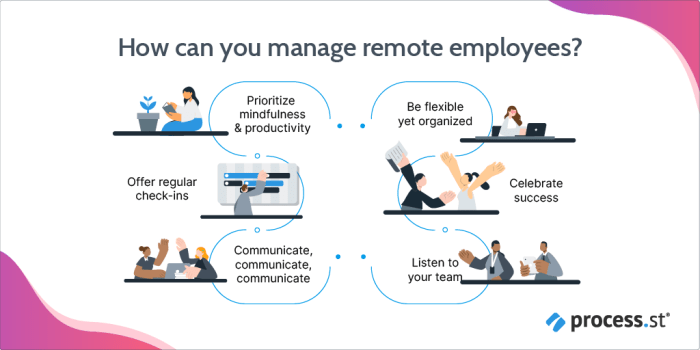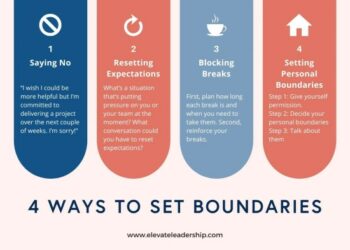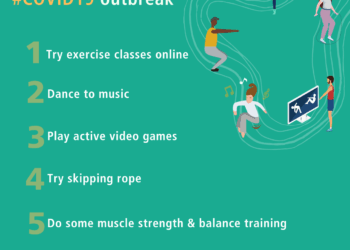As we navigate the landscape of remote work, finding a balance between professional responsibilities and personal well-being becomes increasingly vital. In this discussion, we will explore practical tips and insights on how to effectively maintain work-life balance in the remote work era.
Importance of Work-Life Balance in Remote Work
Maintaining work-life balance is crucial in the remote work era as it helps individuals to separate their professional responsibilities from personal life, leading to a healthier lifestyle overall. In today's digital age where remote work has become more prevalent, finding the right balance between work and personal time is essential for mental well-being and productivity.
Impact of Poor Work-Life Balance on Mental Health and Productivity
Poor work-life balance can have a detrimental effect on mental health, leading to increased stress, anxiety, and burnout. When individuals are unable to disconnect from work, it can result in feelings of overwhelm and exhaustion, ultimately affecting their overall well-being.
Additionally, when personal time is constantly encroached upon by work commitments, it can hinder productivity and creativity, leading to decreased job satisfaction and performance.
Examples of How Work-Life Balance Affects Overall Well-Being
- Striking a balance between work and personal life allows individuals to recharge and replenish their energy, leading to increased focus and motivation when they return to work.
- Setting boundaries and establishing a routine can help create a sense of structure and stability, reducing feelings of chaos and overwhelm.
- Engaging in activities outside of work, such as hobbies, exercise, or spending time with loved ones, can improve mental health and overall happiness.
- Work-life balance is essential for preventing burnout and maintaining long-term career satisfaction and fulfillment.
Setting Boundaries
Setting boundaries between work and personal life is crucial for maintaining a healthy work-life balance, especially in the remote work era. By implementing clear boundaries, you can improve productivity, reduce stress, and ensure that you have time for both work and personal activities.
Defining Work Hours
- Set specific work hours and communicate them to your colleagues to establish when you are available for work-related tasks.
- Avoid working outside of these designated hours to prevent burnout and maintain separation between work and personal time.
- Use calendar tools or time-tracking apps to keep track of your work hours and ensure you are sticking to your schedule.
Creating a Designated Workspace
- Set up a dedicated workspace in your home that is separate from areas used for leisure activities.
- Ensure your workspace is comfortable, well-lit, and free from distractions to help you focus during work hours.
- Establish boundaries with your family or housemates to minimize interruptions while you are working in your designated space.
Time Management Techniques
Effective time management is crucial for remote workers to maintain a healthy work-life balance. By utilizing the right tools and techniques, you can enhance productivity and avoid feeling overwhelmed.
The Pomodoro Technique
The Pomodoro Technique is a popular time management method that involves breaking work into intervals, usually 25 minutes long, separated by short breaks. This technique helps improve focus and productivity by allowing you to work in short, focused bursts. By implementing the Pomodoro Technique, you can better manage your time and avoid burnout.
- Set a timer for 25 minutes and work on a specific task without any distractions.
- After the timer goes off, take a short 5-minute break to rest and recharge.
- Repeat this cycle for four intervals, and then take a longer break of 15-30 minutes.
By breaking your work into manageable chunks, the Pomodoro Technique can help you stay focused and maintain a healthy work-life balance.
Prioritizing Tasks
Prioritizing tasks is essential for remote workers to stay organized and focused on important deadlines. Here are some tips on how to prioritize tasks effectively:
- Start by creating a to-do list with all your tasks for the day or week.
- Identify urgent and important tasks that need immediate attention.
- Use tools like Eisenhower Matrix to categorize tasks based on their urgency and importance.
- Allocate specific time slots for each task based on their priority level.
- Regularly review and adjust your task list to ensure you are on track to meet your goals.
By prioritizing tasks, you can focus on what truly matters and avoid feeling overwhelmed by a long list of to-dos.
Self-Care Practices
Maintaining a healthy work-life balance goes beyond just setting boundaries and managing time effectively. Self-care practices play a crucial role in ensuring remote workers can thrive both professionally and personally.
Regular Breaks and Physical Activity
Incorporating regular breaks and physical activity into your workday is essential for enhancing productivity and overall well-being
Examples of Self-Care Practices
1. Mindful Breathing
Take a few minutes to practice deep breathing exercises to reduce stress and promote relaxation.
2. Healthy Eating
Fuel your body with nutritious meals and snacks to maintain energy levels and focus.
3. Disconnecting
Set boundaries by unplugging from work devices and screens after work hours to recharge and unwind.
4. Quality Sleep
Prioritize getting enough restful sleep each night to support overall health and cognitive function.
5. Hobbies and Interests
Engage in activities you enjoy outside of work to foster creativity and reduce stress.
Communication and Collaboration

Effective communication and collaboration are essential for remote work success, as they help maintain a sense of connection and teamwork among colleagues. Building strong relationships virtually can boost morale and productivity. Utilizing collaboration tools can streamline work processes and enhance team communication.
Strategies for Effective Communication
- Establish regular check-ins with team members through video calls or messaging platforms to stay connected and informed.
- Be clear and concise in your communication to avoid misunderstandings, especially when relying on written messages.
- Encourage open dialogue and active listening to ensure all team members feel heard and valued.
Importance of Fostering Relationships Virtually
- Organize virtual team-building activities to strengthen bonds and create a sense of community among remote workers.
- Recognize and celebrate achievements, milestones, and birthdays to show appreciation and foster a positive work environment.
- Provide opportunities for casual conversations and social interactions to build relationships beyond work tasks.
Tips for Utilizing Collaboration Tools
- Choose collaboration tools that suit your team's needs and preferences, such as project management platforms, messaging apps, or video conferencing software.
- Set clear guidelines on how to use these tools effectively, including file sharing protocols, meeting schedules, and communication channels.
- Offer training and support to team members to ensure everyone is comfortable and proficient in using the selected collaboration tools.
Last Point
In conclusion, prioritizing work-life balance in the remote work era is key to overall satisfaction and success. By implementing the strategies discussed, individuals can enhance their productivity, mental health, and overall quality of life.
Clarifying Questions
How can I ensure a clear boundary between work and personal life while working remotely?
To maintain a clear boundary, designate a specific workspace at home for work, establish set work hours, and avoid work-related tasks outside of those hours.
What are some effective time management techniques for remote workers?
Utilize time management tools, such as the Pomodoro technique, prioritize tasks, and schedule regular breaks to enhance productivity.
How important is self-care in maintaining work-life balance during remote work?
Self-care is crucial for remote workers to avoid burnout. Incorporate regular breaks, physical activity, and self-care routines into your daily schedule.
How can I foster effective communication with colleagues while working remotely?
Stay connected through collaboration tools, schedule regular check-ins with team members, and prioritize building virtual relationships to maintain effective communication.









